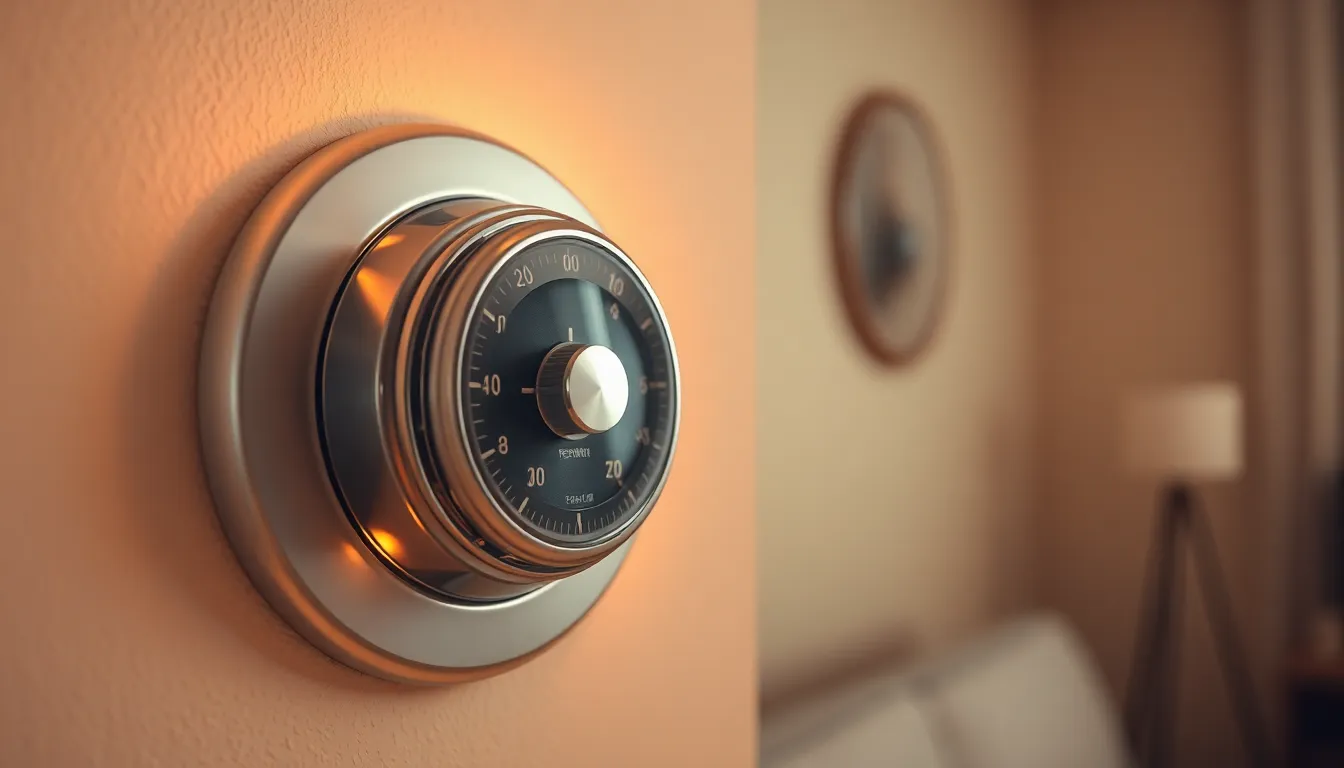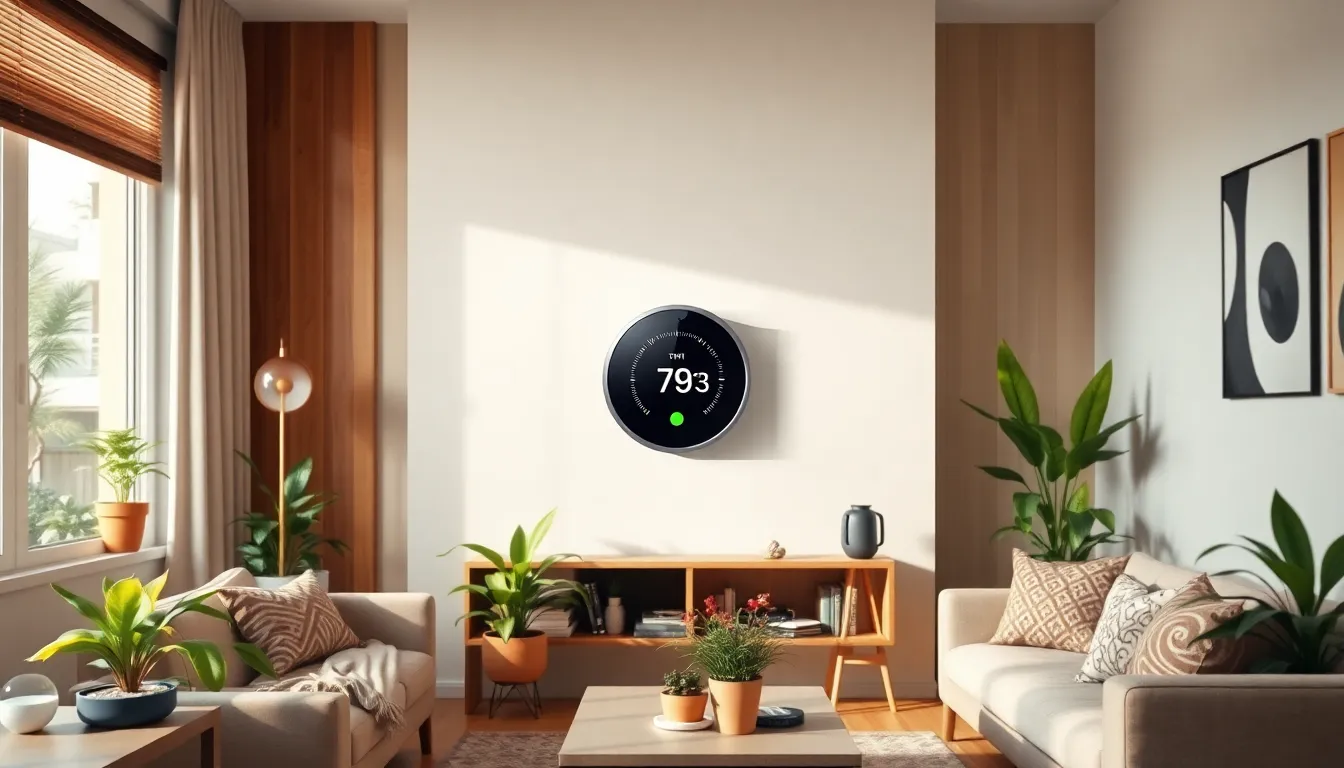When it comes to keeping your home cozy, the thermostat is your unsung hero. It’s like the conductor of an orchestra, ensuring every room plays its part in harmony. But not all thermostats are created equal. With options ranging from the classic manual dial to smart devices that can anticipate your every need, choosing the right type can feel like a daunting task—like picking the best pizza topping (pineapple, anyone?).
Table of Contents
ToggleOverview Of Thermostat Types
Thermostat types vary significantly, catering to diverse preferences and needs. Manual thermostats offer basic functionality with simple dial or slider controls. These devices require users to adjust settings manually, providing a straightforward option for those seeking simplicity.
Programmable thermostats enhance convenience. Users can set specific schedules for temperature changes, aligning with daily routines. This function helps save energy and maintain comfort without constant adjustments.
Smart thermostats represent the forefront of technology. These devices connect to Wi-Fi networks and allow remote control through smartphones or tablets. They learn user preferences over time, optimizing energy efficiency while ensuring a comfortable environment.
Wi-Fi-enabled thermostats bring advanced features to the table. Users can access and manage settings from anywhere, allowing for adjustments while away from home. Remote functionality improves control and helps save on energy bills.
Zoned thermostats offer a tailored approach. These systems heat or cool specific areas of a home, enhancing comfort based on individual room requirements. Homeowners can enjoy different temperatures in various spaces, reducing energy waste and boosting satisfaction.
In addition to these options, multi-stage thermostats adjust based on heating or cooling demands. This type provides greater control over comfort levels and energy consumption, ensuring efficient climate management.
Choosing the right thermostat type involves considering individual needs and lifestyle. Each thermostat offers unique features that enhance comfort, energy efficiency, and convenience. Understanding these options helps homeowners make informed decisions for optimal living environments.
Mechanical Thermostats

Mechanical thermostats control temperature through simple dial or lever mechanisms. Users set their desired temperature, and the thermostat maintains it by turning the heating or cooling system on or off.
How They Work
Mechanical thermostats utilize a bimetallic strip sensitive to temperature changes. As room temperature shifts, the strip bends, activating the system through a switch. This operation doesn’t rely on digital technology or batteries, making them straightforward and reliable. The tactile feedback from the dial allows users to adjust settings easily. Many installations require basic electrical knowledge but often don’t involve complex wiring.
Pros and Cons
Mechanical thermostats come with several advantages. They provide a low-cost option for homeowners seeking basic temperature control. Reliability ranks high, as these devices typically last for years without electronic failures. Simplicity ensures ease of use, requiring minimal setup. However, limitations exist. Lack of programmable features curtails energy-saving options compared to modern alternatives. Precision in temperature control sometimes falls short, leading to fluctuations. Incompatibility with smart home systems makes integration challenging for tech-savvy users.
Digital Thermostats
Digital thermostats come equipped with advanced technology. They offer precise temperature control and user-friendly interfaces.
Features and Benefits
Digital thermostats feature touch screens, programmable settings, and Wi-Fi connectivity. With programmable settings, users can create schedules to optimize energy use. Wi-Fi connectivity allows control via mobile devices, making it easy to adjust temperatures remotely. Some models learn user habits, adapting the heating or cooling cycles for enhanced efficiency. Increased accuracy in temperature management contributes to consistent comfort throughout the home. Cost-saving benefits arise from energy-efficient operation, helping users lower utility bills.
Installation Process
Installation of digital thermostats generally follows a straightforward process. Users begin by turning off the power to the HVAC system for safety. Next, they remove the existing thermostat and label the wires for easier installation of the new device. Connecting the wires to the corresponding terminals on the digital thermostat is crucial for proper functionality. After securing the device onto the wall, restoring power allows for system testing. User-friendly instructions typically accompany the device, helping to ensure a smooth installation experience.
Smart Thermostats
Smart thermostats are advanced devices that enhance the management of home temperature. These products combine technology with functionality to improve household comfort.
Integration with Home Automation
Smart thermostats offer seamless integration with home automation systems. They connect effortlessly to smart speakers, security systems, and lighting controls. Users can manage their environments from a central hub or through mobile applications. Compatibility with platforms like Amazon Alexa or Google Assistant enhances control convenience. Scheduling features adapt based on household routines, optimizing comfort automatically. Smart devices enable users to create customized settings tailored to unique homes. This level of integration elevates the overall efficiency of a smart home ecosystem.
Energy Efficiency
Energy efficiency represents a key benefit of smart thermostats. These devices adjust temperature settings based on user patterns and external factors. Users enjoy lower energy bills as smart thermostats reduce unnecessary heating or cooling. Programs can reflect occupancy, leading to optimal performance while minimizing energy consumption. Many models provide real-time energy usage data, helping users understand their consumption patterns. This feedback fosters informed decisions about energy-saving practices. Enhanced efficiency not only benefits the environment but also contributes to long-term savings in utility costs.
Comparing Thermostat Types
When choosing a thermostat, various factors come into play, including cost and user preferences. Understanding these aspects helps in selecting the most suitable option.
Cost Considerations
Initial cost variations exist among different thermostat types. Basic mechanical thermostats typically cost between $20 and $60, making them an affordable choice for many homeowners. Programmable thermostats range from $50 to $150, offering increased functionality without breaking the bank. Smart thermostats represent a higher investment, generally priced from $150 to $300, but they deliver advanced features that can lead to energy savings over time. Users should consider not only the purchase price but also potential savings on energy bills when evaluating long-term value.
User Preferences
User preferences heavily influence thermostat selection. Those who appreciate simplicity often opt for basic mechanical models, valuing straightforward operation. Budget-conscious individuals may lean towards programmable thermostats, enabling customized temperature schedules without complexity. Technology enthusiasts frequently gravitate towards smart thermostats, captivated by features like voice control and energy monitoring. Factors such as lifestyle, household routines, and tech-savviness should guide the decision, ensuring that the chosen thermostat enhances comfort and convenience.
Choosing the right thermostat type is crucial for achieving optimal comfort and energy efficiency in any home. With options ranging from basic mechanical models to advanced smart devices, homeowners can find a solution that fits their lifestyle and preferences.
Understanding the unique features and benefits of each thermostat type empowers individuals to make informed decisions. By considering factors such as cost, functionality, and personal habits, they can select a thermostat that not only enhances comfort but also contributes to long-term savings on energy bills.
Ultimately, the right thermostat can transform a house into a more comfortable and energy-efficient home.





